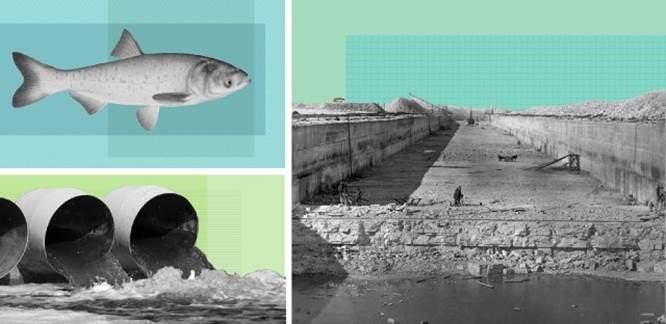Floods, Carp, And Crap: The Environmental Impacts Of The Chicago River Reversal
Press Release | October 14th, 2019

The reversal of the Chicago River in 1900 has been celebrated as not only an inspired solution to a vexing problem, but an engineering marvel. But little did anyone understand at the time how long the effects might linger, how far they might ripple and how controversial they might prove to be. Thanks to its location at the southern tip of Lake Michigan, Chicago was a booming commercial hub by the end of the 19th century. But as the city grew, so too did its sewage problem. The Chicago River, once a shallow stream teeming with life, began to function more like a common gutter. It captured the waste of more than 1.5 million people (not to mention the growing stockyards), flushing it directly into Lake Michigan — where Chicago also sourced its drinking water. In 1885, a violent storm flooded the river and belched a huge plume of sewage into the lake.

